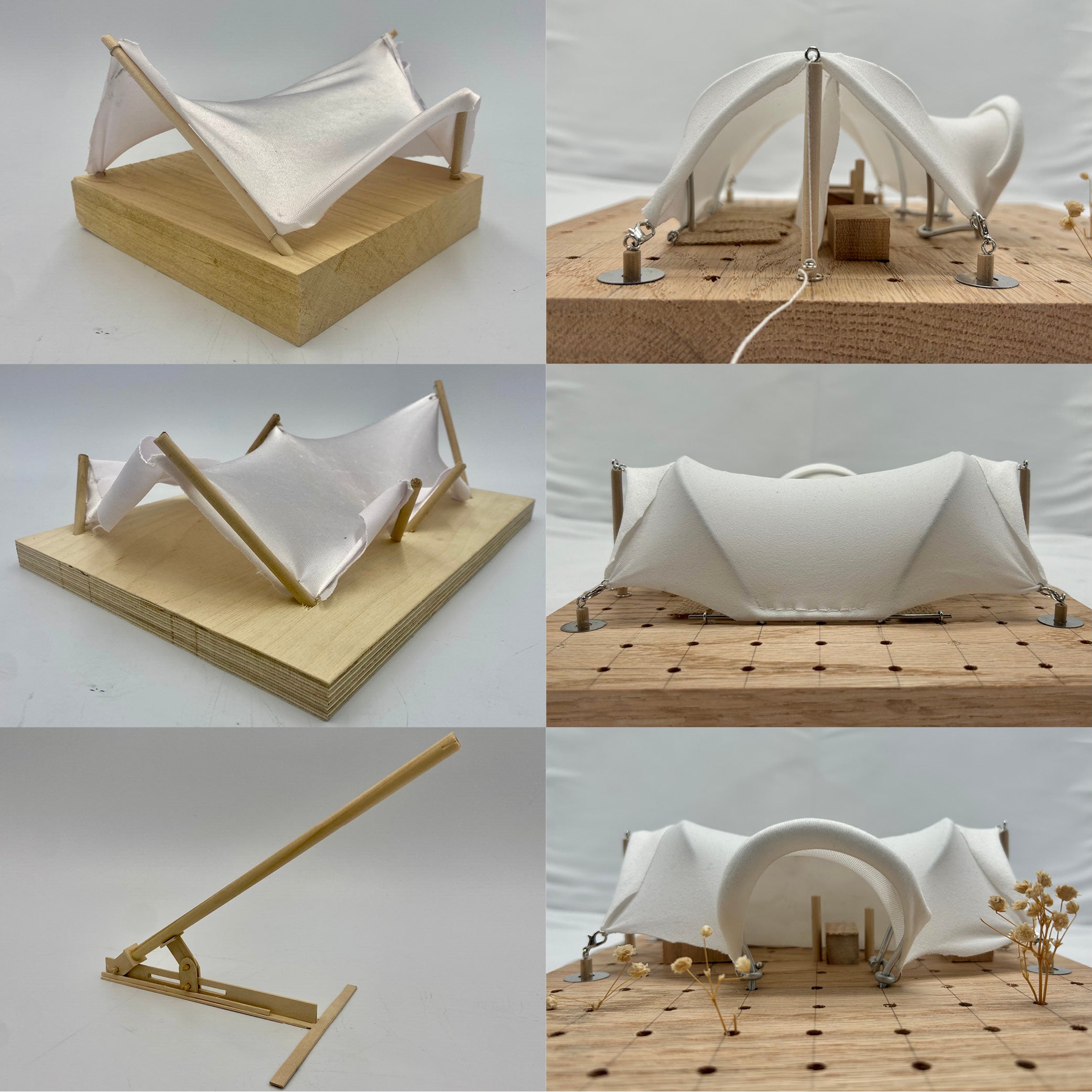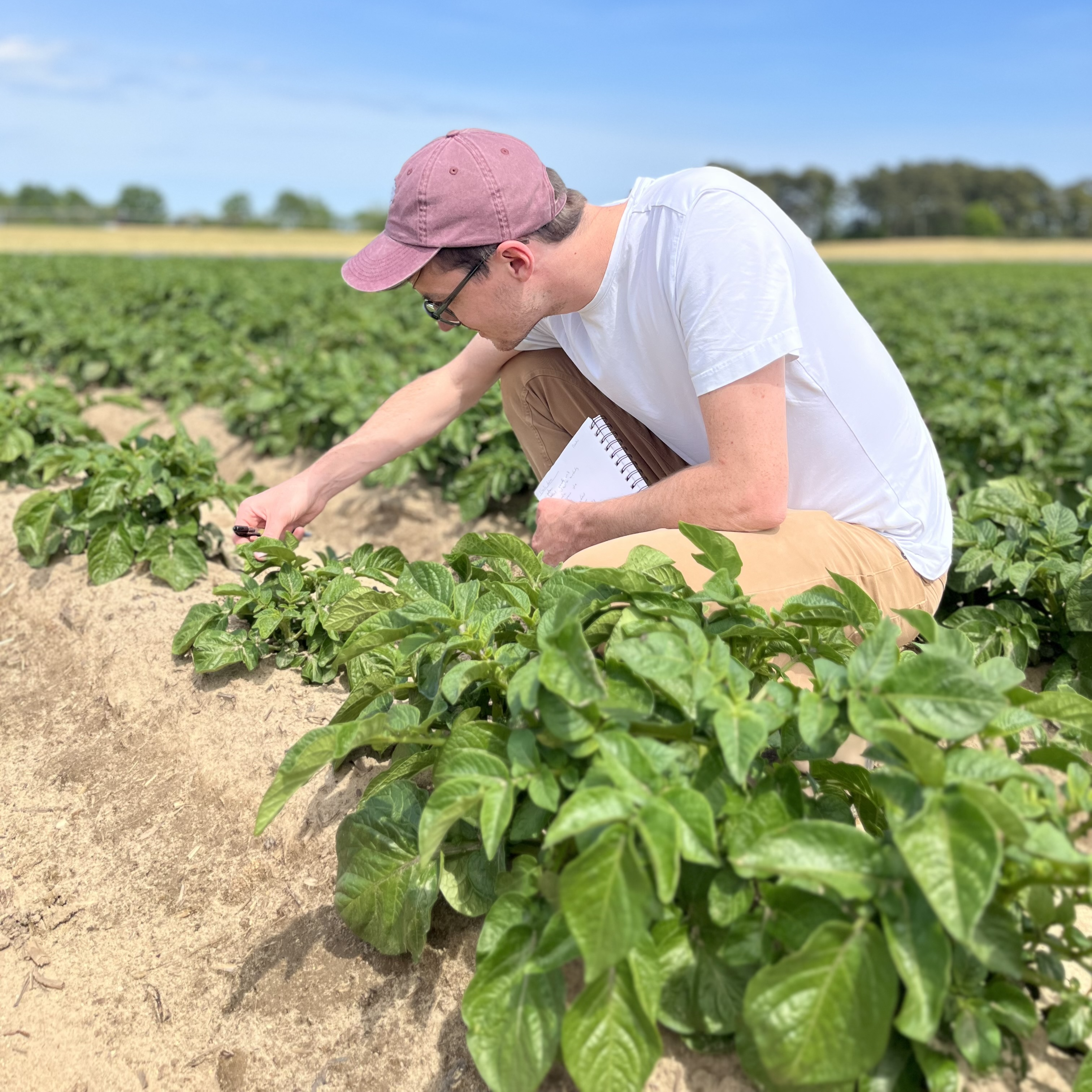
Empathy in Design: Elgin Cleckley's "Brookes (Revisited)" on view in London and at UVA
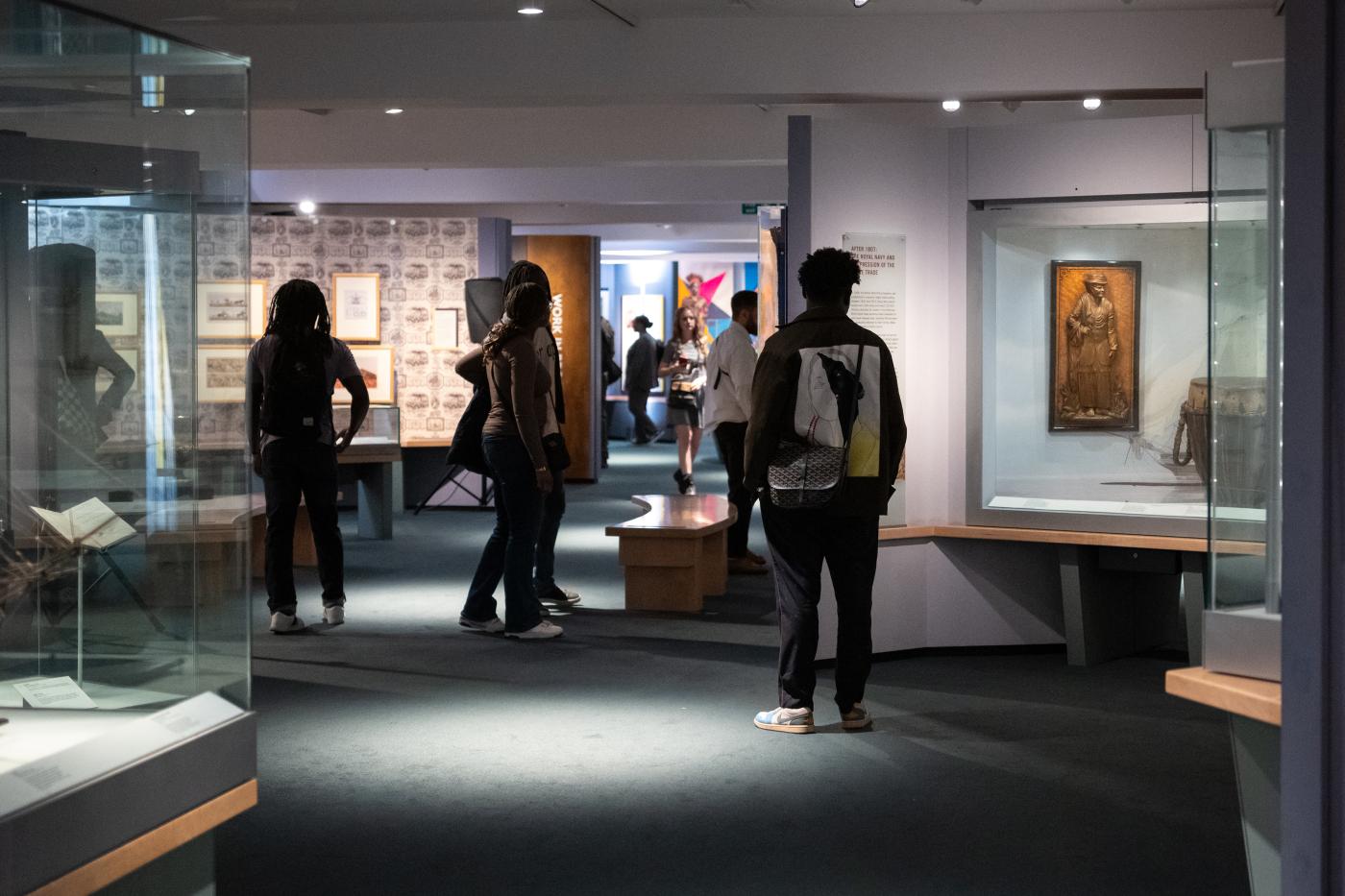
In recent years, London’s National Maritime Museum (NMM) has undergone a transformative mission to better represent the legacies of the transatlantic slave trade and elevate Black voices within its exhibitions, especially in the Atlantic Worlds gallery. Central to this shift was the museum's collaboration with The Collective Makers, a group dedicated to improving diversity in the arts. After curating the NMM’s popular exhibition Our Connection to Water, The Collective Makers were invited to rethink Atlantic Worlds—creating community engagement events and advocating for artistic interventions into the gallery’s retelling of the sometimes-brutal histories of the Atlantic Ocean.
Lison Sabrina Musset, co-founder of The Collective Makers, played a pivotal role in facilitating new artists’ commissions for Atlantic Worlds. "Our challenge was to ensure that the history was told through the artworks now installed in the space," Musset noted. “The rewards were getting Black involvement through the graphics, design of the reflective space, and getting artistic voices of the African diaspora heard.” Among the artists selected was Elgin Cleckley, Associate Professor at the University of Virginia School of Architecture, whose extensive research on the transatlantic slave trade, coupled with his empathic design approach, made him an essential voice in the project.
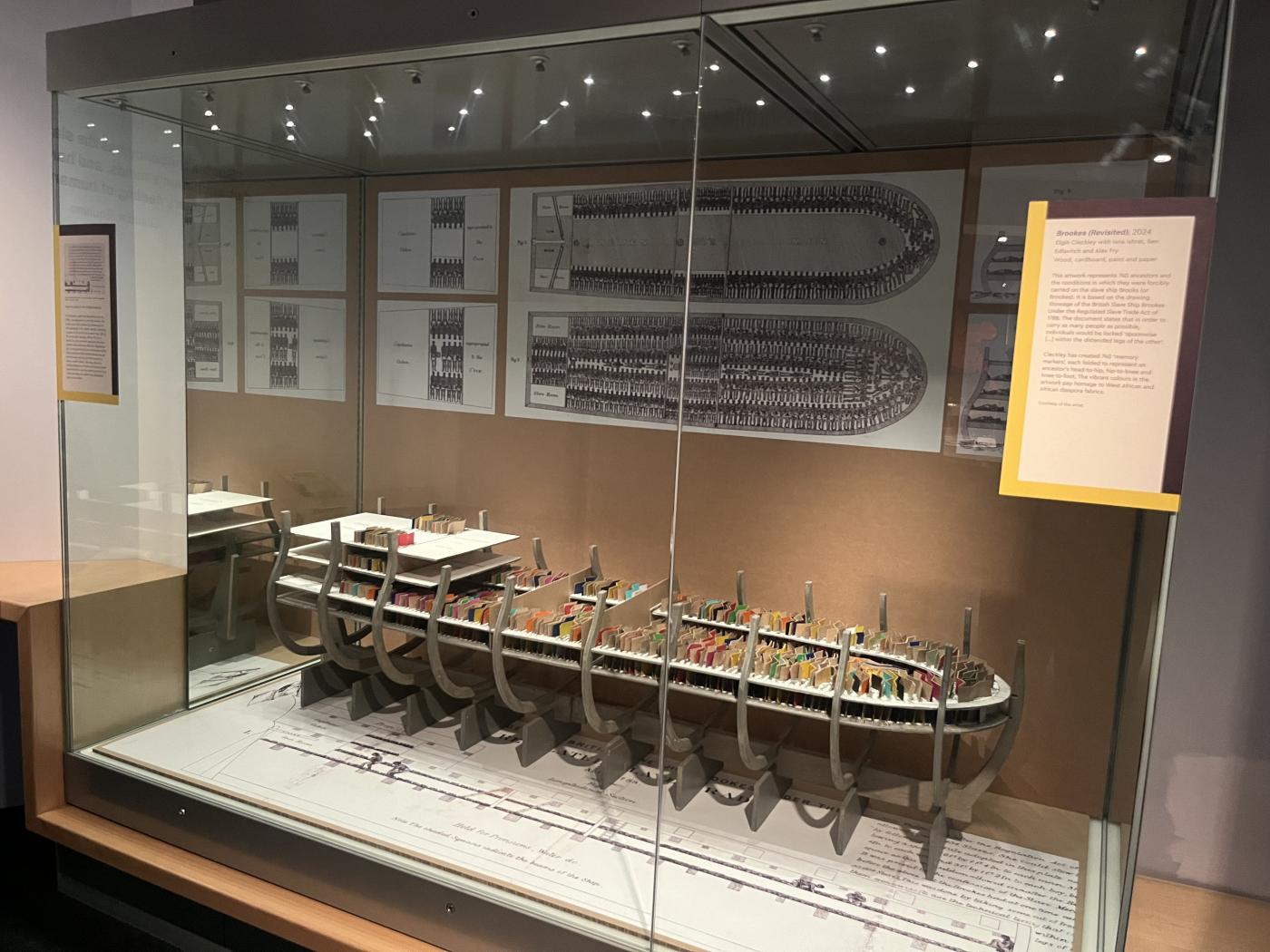
Cleckley’s Brookes (Revisited) installation, now a permanent feature at the NMM, reimagines the infamous British slave ship Brookes, and one of its journeys transporting 740 captured Africans in the brutal conditions of the Middle Passage. Building on the abolitionist drawing Stowage of the British Slave Ship Brookes (1788), Cleckley created a large-scale model of the vessel filled with 740 “memory markers” in bold colors of the African diaspora to evoke the physical presence of each ancestor.
This installation offers just a glimpse into Cleckley’s broader body of work, which he has revisited and expanded in various forms. A new exhibition at UVA School of Architecture’s Elmaleh Gallery delves deeper, exploring all 11 voyages of the Brookes through models, drawings, and photographs. By reconstructing the spatial confinement of 5,122 ancestors, the exhibition responds to key questions at the heart of Cleckley’s practice: How can architecture, art, and design help us connect with what is missing from historical narratives? And how can this connection empower us to create a more just and empathic world?

In addition to these questions, Cleckley’s work is deeply personal. For the UVA show, he provides rich context for Brookes (Revisited) by drawing on childhood memories of a family quilt, which wove together his ancestor's stories. This early inspiration later intersected with his research as a graduate architecture student at Princeton, where he focused on sites of Black history in New York City. During this formative period, Cleckley developed a visual language inspired by the patchwork quilt, using it to map Black identity and memory for his graduate thesis project. It was here that he first referenced the architectural drawing of Brookes, laying the groundwork for research he would return to several decades later.
In the Elmaleh Gallery, Cleckley offers visitors a window into his working process and ongoing exploration of how design can engage with grief and traumatic histories. By employing what he terms "empathic design," Cleckley creates spaces that do not just present historical facts but invite the viewer to feel the weight of those experiences—spaces where the personal and collective memories of the African Diaspora are made tangible.

The impact of Brookes (Revisited) has extended to Cleckley’s student team who played a crucial role in bringing the work to life. Iana Ishrat (BS Arch ‘24) had the opportunity to go to London to assist Cleckley with the NMM installation. "Working on the project is something I will carry with me for the rest of my life," said Ishrat. Over the three-day install, she recalled Elgin talking to over a dozen museum visitors who were passing by. “The attentive and precise manner in which he was able to connect with everyone was an amazing lesson in his empathy, respect, passion, and preparation in every situation.”
This collaborative and deeply personal approach to empathic design is central to Cleckley’s vision. The Brookes (Revisited) work, with its colorful memory markers, maps, and data visualizations, humanizes the untold narratives of the ancestors who endured the horrors of the Middle Passage. By weaving together innovative empathic design with historical research, material processes, personal and diasporic histories, Cleckley ensures that these ancestors occupy an enduring space in the history of humanity—one that acknowledges both the pain of their journey and the resilience of their legacy.
Brookes (Revisited) is on view through November 20 at the School of Architecture’s Elmaleh Gallery. Professor Elgin Cleckley will give a gallery talk on Friday, November 15 at noon.
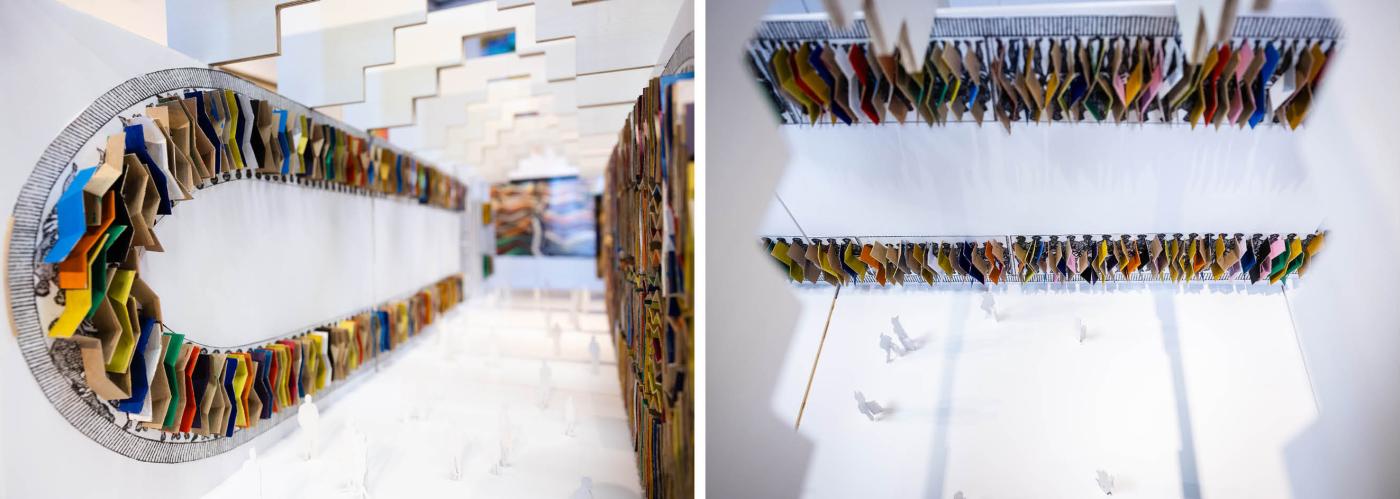
The exhibition was made possible with support from:
UVA School of Architecture Student Design Team: Iana Ishrat, Alex Fry, Ben Edlavitch, Jiajie Li, Sajani Silla, Mia Villani
UVA School of Architecture: Dean Malo A. Hutson and Jeana Ripple, Chair and Associate Professor, Department of Architecture
University of New Mexico School of Architecture and Planning: Katya Crawford, Professor and Chair, Department of Landscape Architecture; Rachel Jump, Administrative Assistant to the Dean; Sarah Aziz, Assistant Professor, Architecture
Royal Museums Greenwich National Maritime Museum: Joanna Salter, Senior Manager of Participation and Lison Sabrina Musset, Co-Founder, The Collective Makers
UCL London's Centre for the Study of the Legacies of British Slavery: Dr. Matthew Smith, Professor of History and Director
Residencies: MacDowell, Art Omi, Anderson Center at Tower View, Good Hart
Loghaven
The Cleckley Family
Special thanks to the spring 2024 ARCH 2070_3070 students who created the feedback quilt: Leon Arceo, Natalie Caulfield, Alex Cuenco-Olaya, Esha Fateh, Clare Gibb, Alexander Hause, Akari Hernandez, Abby Kupstas, Lilly McCluer, Rachel Murphy, Ciel Park, Emily Phan, Cole Rozwadowski, Anika Sanchez-Piotrowski, Ellie Strahorn, Jataiya Taylor, Bri Velasco, Alan Watts, Chase Watts, Evan Xu, with co-instructor Stacy Scott


